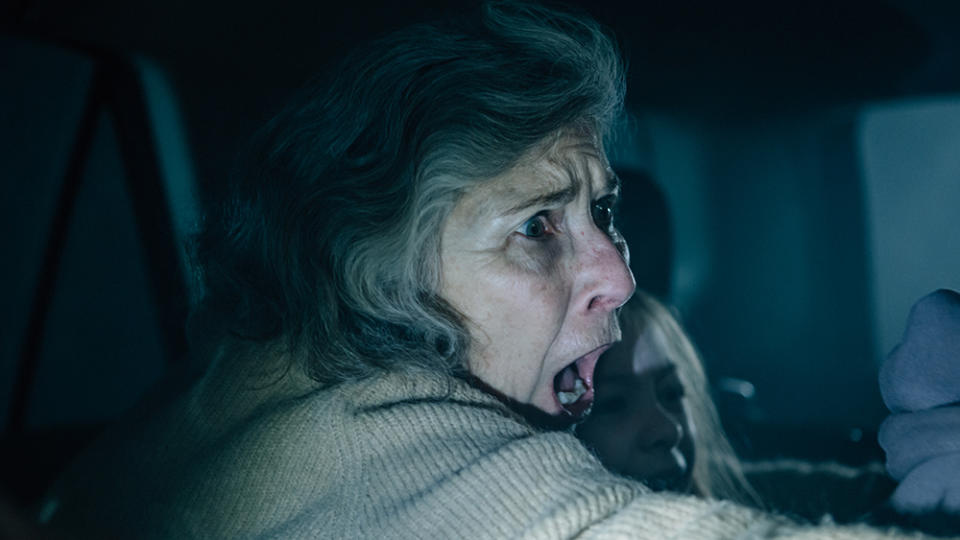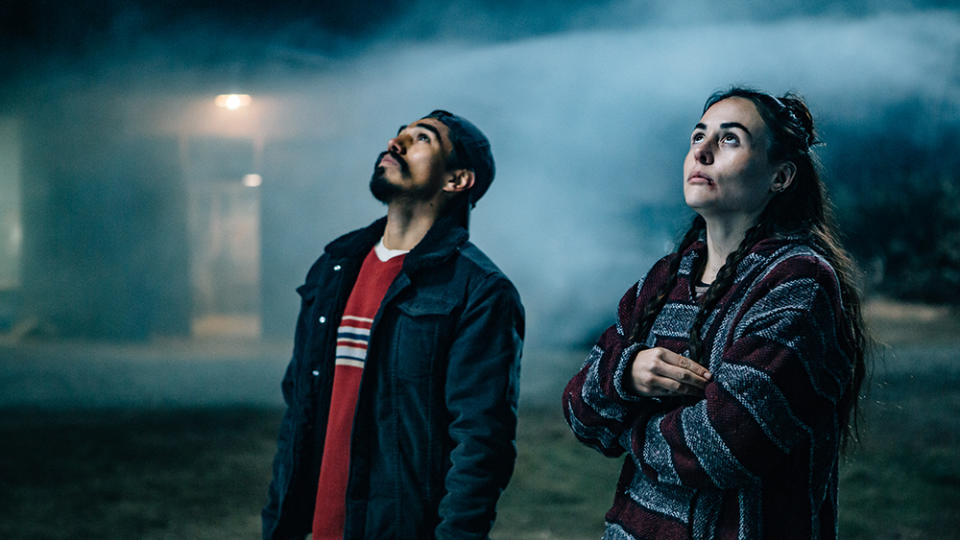Pablo Fendrik Bows Latino Sci-Fi Series ‘The Shelter,’ From Starzplay, Pantaya, Fabula, Fremantle

In an early scene in Episode One of Pablo Fendrik’s “The Shelter” which is suffused in oneiric chromatic blue, Emilia, a little girl in bed at night, spies a figure down a corridor who looks like her dead older sister, Daniela.
Following her to a barn door, Emilia enters to discover its chicken slaughtered as a huge light flares in the night sky outside. Emilia wakes up. Next days, the chicken are discovered slaughtered in the barn.
More from Variety
Bowing on Pantaya and Starzplay on June 23, six-hour sci-fi series “The Shelter” (“El refugio”) is the first major premium sci-fi TV series from Latin America. That tells. Classic sci-fi flowered after the unbelievable horror of World War II, showing humankind defeating an alien enemy through courage and the force of reason.
What could a Latin American sci-fi series look like 75 years later? “The Shelter” gives one answer, which having grabbed the viewer in early stretches, grows in sophistication. Emilia forms part of a family whose children are on summer vacation on their grandparents’ farm in the picturesque countryside of Tepoztlan, central Mexico.
The family has already faced the incomprehensible, the death of their eldest daughter, Dani, in a motorbike accident just down the road. Now, suddenly, reports begin of strange phenomena which cause repeated blackouts. Experts talk about solar storms as rumors grow of an alien invasion.
Yet all the family can do at first is to watch their TV, computer and mobile screens. “What is real?” “What happened to the world they knew? Is this ranch a refuge? Is it the final stronghold of humanity?” the synopsis asks.
As the series builds, one suspicion is that the real referent of its title is to a rational mindset born of the Enlightenment buoyed by scientific progress which, until very recently was held to be the answer to everyone’s problems.
“The Shelter” forms part of one of the most exciting and fertile talent-company axes currently making premium series in the Spanish-speaking world
In industry terms, the six-part sci-fi series is produced by global streamer Starzplay, L.A.-based Spanish-language Pantaya, Pablo and Juan de Dios Larrain’s Fabula and U.K. production -distribution giant Fremantle.
By way of talent, Fabula and Fremantle produced “La Jauria,” a psychological gender crime thriller showrun by Lucia Puenzo who has now made “Señorita 89” with all four companies on board, a series which peels away the glamour of a beauty pageant to reveal the circles of hell behind.

Courtesy of Pantaya
Following powerful sales on “La Jauría” to Amazon and HBO Max for the U.S., Fremantle announced in January that a third season of “La Jauria” and a second of “Señorita 89” were in development.
“The Shelter” is based on an original idea by Julio Rojas, cineaste Matías Bize’s regular co-scribe (“The Life of Fish”) who is developing a second career as a sci-fi writer, penning audio-series “Caso 63.” It is written by Rojas, Francisco Ortega, author of best-selling novel “Lodge,” and Enrique Videla (“La Jauría”).
The choice of Fendrik as a director is hardly coincidental. Few Latin American directors have his nuanced sense of genre, nor take it to such wondrous places. A big hit for HBO Latin America, “The Bronze Garden,” which Fendrik co-directed with Hernán Goldfrid, is a desperate missing child procedural, shot with near experimental cinematographic flair.
The most acclaimed of 2021’s Berlinale Series, “Amongst Men,” also for HBO and set in 1996 Buenos Aires, is a hugely stylish crime thriller whose cops and mobsters are brutally violent, absolutely incompetent and often deranged.
Variety talked to Fendrik in the run up to the first episode premiere of “The Shelter.”
At least from its first two episodes, “The Shelter” feels like a broader audience play than “Amongst Men” and “The Bronze Garden.”
Yes, it’s more audience friendly. That came with the scripts. That said, a good part of my work was layering scenes with a narrative and visual sophistication, aiming at a slightly darker sci-fi style, not so luminous and “Spielberg-esque,” a bit more auteurist in direction. Many scenes aren’t just sci-fi but weave in horror tropes, galvanizing the visuals. With early-on agile, “friendly” storytelling, the series takes the audience to zones of a certain darkness, ambiguity and mystery – cards which weren’t on the table from the beginning, but are played little by little as the series advances. It’s a lovely trick.
“The Shelter” is the first major Latin American sci-fi show….
Yes, I was attracted by the idea of telling a sci-fi story which is set in Latin-America and belong to Latin America. It doesn’t ignore the history of the genre, including its recent history on platforms: “Stranger Things,” “Dark” and “The Walking Dead.” But it sets out to establish its own identity, not only as a genre-blender but a cross of cultures. As the plot advances it becomes clearer that this is sci-fi meets Latino culture. The key and strength of the project was its having its own identity.
There’s a signature shot towards the end of Episode One where the family comes out of the house to look at lights in the sky which you film but then shoot the family from above, as if announcing that the series will turn on how this family confronts what’s happening.
The death of the oldest daughter splits the family, separates the parents, leaves the kids not knowing where they are. As events develop and the perception of threat gets greater, the family is forced to reunite, and patch up their differences, put everything which separated them on the table. It’s the capacity of this family to come together again which can decide their survival.
Did the pandemic influence in any way the story?
There’s definitely an influence, but an involuntary one. What the series wants to talk about is not so much the lockdown effect as the contemporary trend towards a virtual world, and how the new media shapes perception of threat and fear. That debate is seen in the family itself, where some are more believer and others more skeptical. Then a third event happened or suggest something that surpasses both sides’ expectations….
Like Argentine Armando Bo’s “El Presidente,” “The Shelter” is another example of a pan-Latin American series, with an Argentine director, Mexican cast, and Chilean co-star, Alfredo Castro.
Yes, Latin America’s at a boiling pint, in production and market demand. No single country can cope on its own with supplying all the platforms’ needs. So we have to look for hybrid productions. We’re all looking to see how we can produce in the most authentic manner possible, without limiting ourselves to the borders of our own countries in terms of talent, crew or even equipment rentals. Every shoot outside Argentina is an enormous learning curve from which I emerge all the stronger, with new tools.

Courtesy of Pantaya
Best of Variety
Sign up for Variety’s Newsletter. For the latest news, follow us on Facebook, Twitter, and Instagram.

